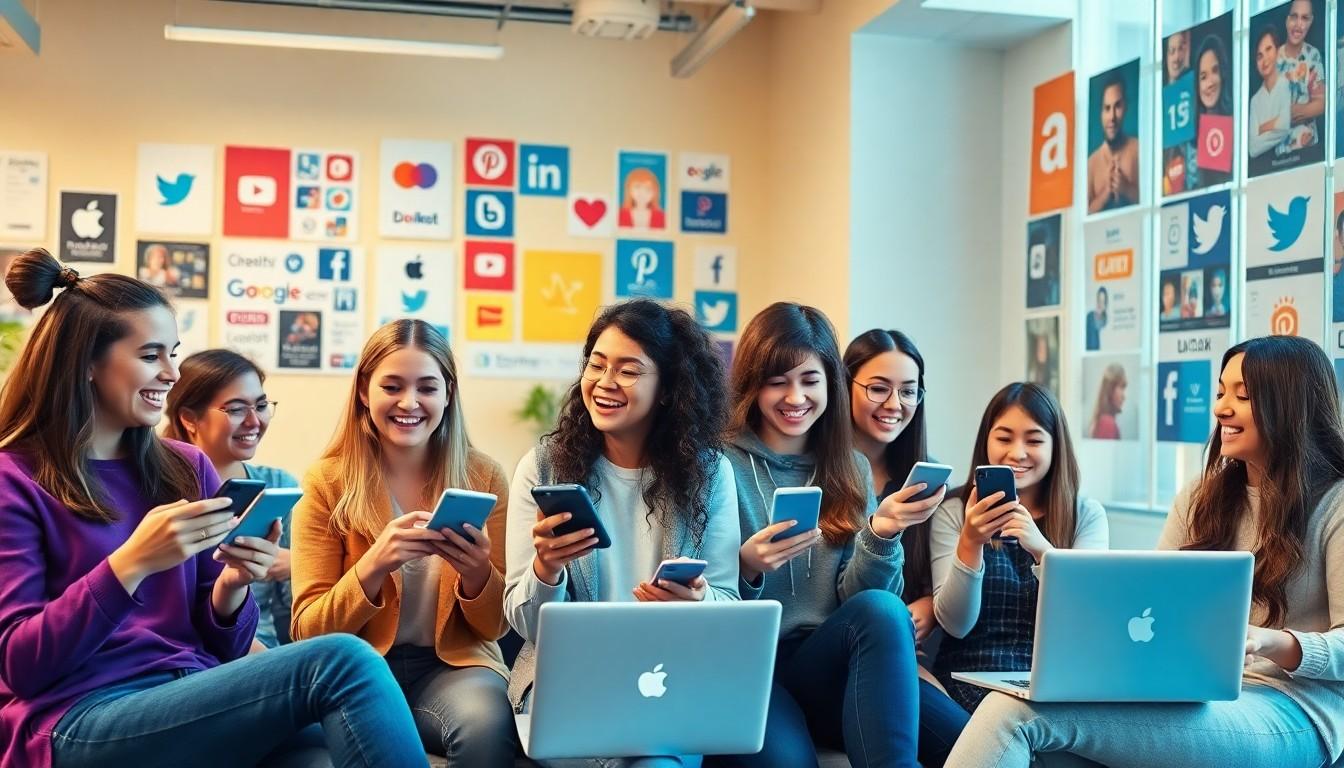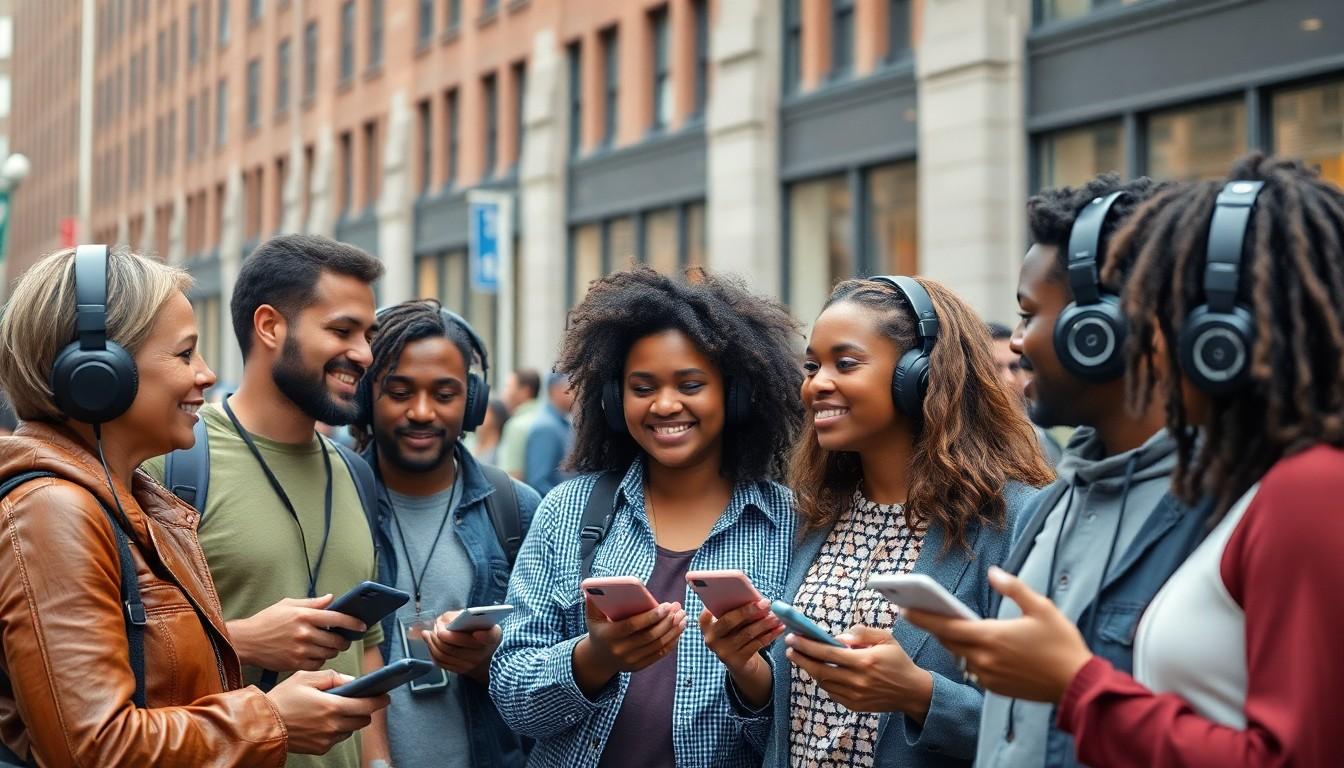Types of Digital Media: Unlocking the Secrets Behind Modern Communication and Entertainment

In today’s fast-paced world, digital media is like the superhero of communication, swooping in to save the day. From social media to podcasts, it’s everywhere, shaping how people interact, learn, and entertain themselves. But with so many types out there, it can feel like trying to choose a favorite child—impossible and slightly chaotic.
Types Of Digital Media
Digital media encompasses a range of formats that facilitate communication, entertainment, and information sharing. Social media platforms connect users through content sharing, comments, and interaction. Popular examples include Facebook, Twitter, and Instagram, each serving unique audiences and purposes.
Websites and blogs provide static and dynamic content, offering information and insights across various topics. Users access websites for research, shopping, or news updates. Blogs, on the other hand, cater to niche interests with personal perspectives and expert opinions.
Podcasts deliver audio content, allowing people to consume information while multitasking. Often episodic, they cover subjects from storytelling to expert interviews, appealing to diverse listener preferences. The growth of platforms like Spotify and Apple Podcasts has significantly expanded listener access.
Video streaming platforms offer rich visual content. With access to movies, documentaries, and user-generated videos, services such as YouTube and Netflix cater to a wide audience. This format has transformed how individuals experience entertainment.
Email serves as a direct communication tool, allowing users to engage in formal and informal correspondence. Businesses leverage email marketing to connect with customers, share promotions, and disseminate information. Consumers also utilize email for notifications and newsletters.
Lastly, interactive media includes elements that engage users in real-time experiences. Video games and virtual reality applications provide immersive environments, encouraging active participation in storytelling and gameplay. Engaging with these formats fosters deeper connections and experiences.
Audio Media

Audio media encompasses various formats that deliver sound content to audiences, enhancing communication and entertainment experiences. Two major categories include podcasts and music streaming.
Podcasts
Podcasts serve as a versatile platform for storytelling and discussions. With over 2 million podcasts available, listeners engage in diverse topics such as education, entertainment, and news. Each episode averages 30 to 60 minutes, allowing for deep dives into subjects. Accessibility adds to their appeal, as audiences can listen on-the-go through smartphones or computers. This format also creates intimate connections between hosts and listeners, fostering a community around shared interests.
Music Streaming
Music streaming offers instant access to vast libraries of songs and albums. Platforms like Spotify, Apple Music, and Amazon Music feature over 70 million tracks, catering to various tastes and genres. Users can create personalized playlists or explore curated ones, ensuring a continuous discovery of new music. The convenience of offline listening enhances user experience, allowing music enjoyment without internet access. Music streaming has transformed how people consume music, making it an integral part of daily routines.
Visual Media
Visual media encompasses formats that engage audiences through imagery and motion. This category includes elements that significantly enhance communication and storytelling.
Images and Photography
Images present captivating visuals that capture attention instantly. Photography, a key aspect, includes everything from portraits to landscapes, creating emotional connections. Stock images and original photography are widely used in digital marketing, helping brands convey messages effectively. Around 80% of content consumed online involves visual elements, demonstrating their importance in digital media strategies. Effective images not only enhance text but also improve user engagement, leading to higher retention rates.
Video Content
Video content stands out as one of the most engaging forms of digital media. According to recent statistics, videos hold viewers’ attention 95% more than text alone. Platforms such as YouTube and Vimeo host a variety of content including tutorials, vlogs, and promotional materials. Creating high-quality video content allows brands to communicate messages quickly and dynamically. Live streaming has also gained popularity, offering real-time interaction opportunities. This immediacy fosters a sense of community among audiences and deepens brand loyalty.
Social Media Platforms
Social media platforms serve as vital tools for communication and engagement, offering unique spaces for users to connect and share content. They enhance social interactions and provide diverse formats.
Microblogging
Microblogging platforms like Twitter and Tumblr allow users to post short updates and share quick thoughts. Tweets, limited to 280 characters, facilitate real-time sharing of news and opinions. Users engage through retweets and likes, which encourages interaction on trending topics. Content can include text, images, or links, promoting diverse expressions. Influencers and brands utilize microblogging to reach audiences quickly, driving instant engagement and responses.
Image Sharing
Image sharing platforms, such as Instagram and Pinterest, focus on visual content to attract and engage users. Instagram supports photo and video sharing, emphasizing aesthetics and creativity. With more than 1 billion active users, it fosters a vibrant community where users express their lifestyles and interests. Pinterest allows users to create boards and save inspiring images, serving as a discovery and planning tool for projects. Both platforms utilize hashtags and algorithms, making it easier for content to reach wider audiences and inspire engagement.
Interactive Media
Interactive media fosters user engagement through immersive experiences. This type of media challenges traditional consumption by allowing audiences to actively participate.
Video Games
Video games exemplify interactive media by combining storytelling with interactivity. Gamers navigate virtual worlds, solve puzzles, and make decisions impacting outcomes. Statistics reveal that 2.7 billion people globally engage with video games, highlighting their popularity. Genres range from action to role-playing, catering to diverse preferences. Platforms like consoles and PCs offer access to a wide array of titles, often incorporating multiplayer features to foster social connections. Game developers consistently innovate, enhancing graphics and gameplay mechanics to create richer experiences.
Augmented and Virtual Reality
Augmented and virtual reality revolutionize how users perceive and interact with digital content. These technologies blend real and virtual worlds, providing immersive experiences. Augmented reality, for instance, overlays digital elements onto the physical environment through smartphones or smart glasses. This application enhances everything from gaming to education, engaging users in unique ways. Virtual reality immerses users in fully simulated environments, allowing exploration without physical limitations. With more than 171 million people using VR globally, the demand for these experiences keeps growing. Industries leverage these technologies for training, marketing, and entertainment, creating opportunities for innovation and engagement.
Digital media continues to reshape the landscape of communication and entertainment. With its diverse formats ranging from social media to podcasts and interactive experiences, it offers something for everyone. Each type serves a unique purpose, catering to different preferences and lifestyles.
As technology evolves, so does the way people engage with digital content. The increasing popularity of immersive experiences like virtual reality and live streaming indicates a growing desire for deeper connections. Embracing these various forms of digital media not only enhances personal experiences but also fosters community and collaboration in an ever-connected world.
